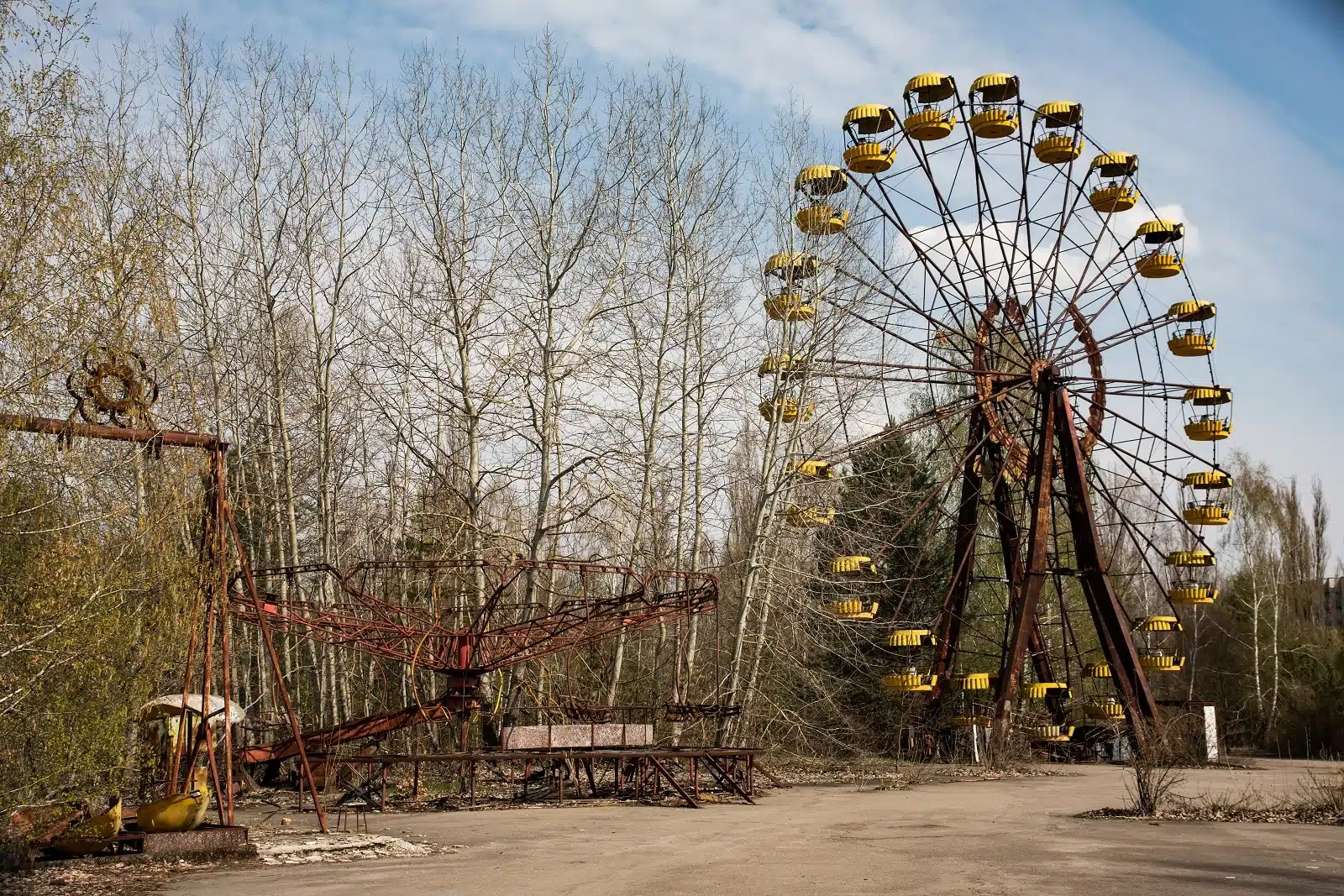Dark tourism involves visiting locations associated with death, tragedy, or the macabre. These destinations offer a profound perspective on human history, often involving solemn reflection on past events. This guide explores 12 significant dark tourism sites around the world, each providing insight into the darker aspects of human history and culture.
1. Auschwitz-Birkenau, Poland
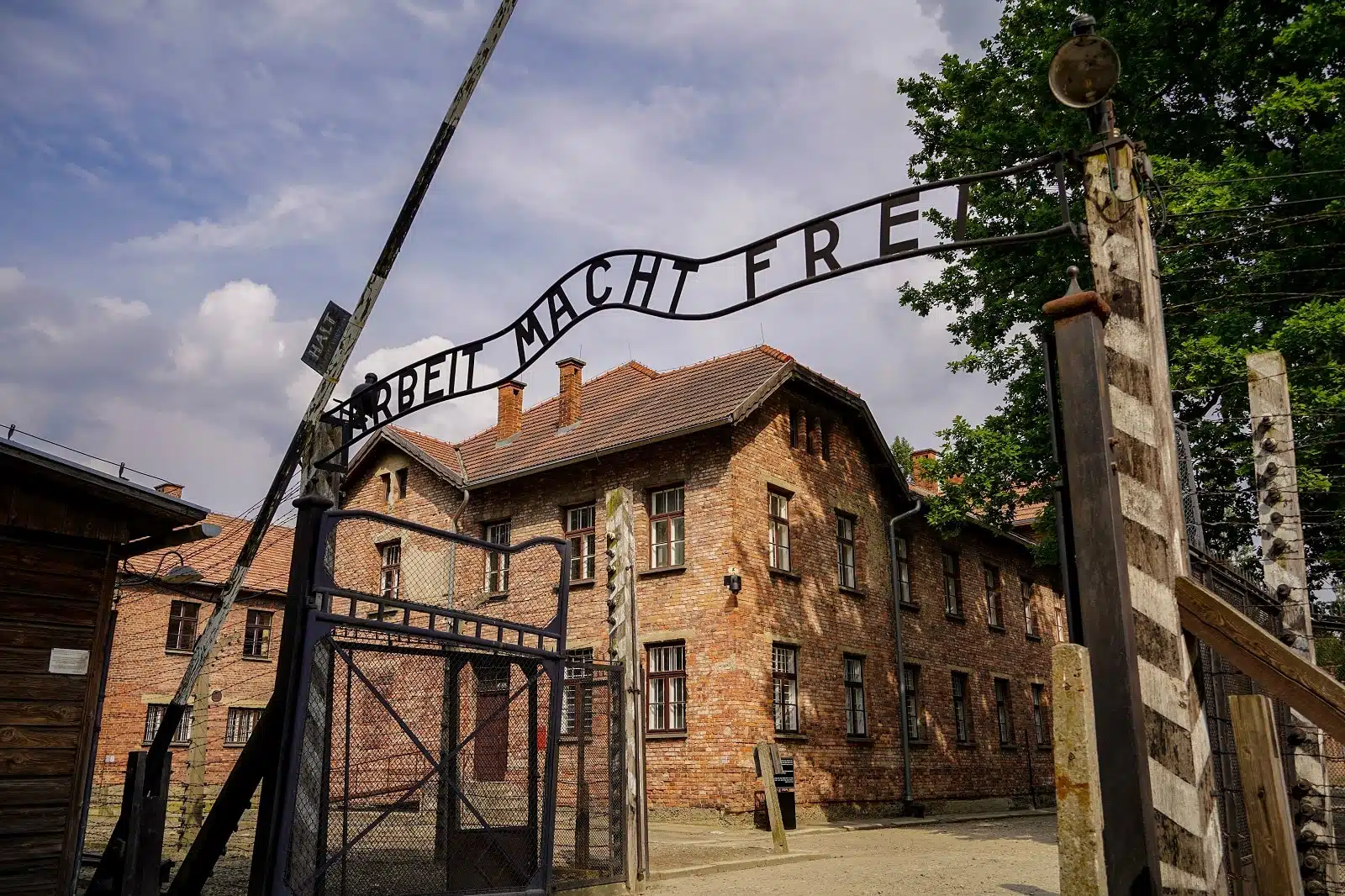
Image Credit: Shutterstock / EricBery
Auschwitz-Birkenau holds one of history’s darkest chapters. This former Nazi concentration and extermination camp complex, now a museum and memorial, offers a deeply moving experience. As you walk through the gates bearing the infamous motto “Arbeit Macht Frei” (Work Sets You Free), you enter a world that starkly illustrates the horrors of the Holocaust. The preserved barracks, gas chambers, and personal belongings of the victims are poignant reminders of the millions who suffered and perished here. The site includes extensive exhibits and documentation, providing a comprehensive understanding of the camp’s operations and the broader context of World War II atrocities. A visit to Auschwitz-Birkenau is an essential pilgrimage to remember and honor the victims and to reflect on the human capacity for both cruelty and resilience.
Insider’s Tip
Consider hiring a knowledgeable guide to better understand the site’s history.
When to Travel
May to September offers milder weather, although visiting in the winter can add to the somber experience with fewer crowds.
How to Get There
Fly to Krakow and take a bus or train to Oswiecim.
2. Chernobyl, Ukraine
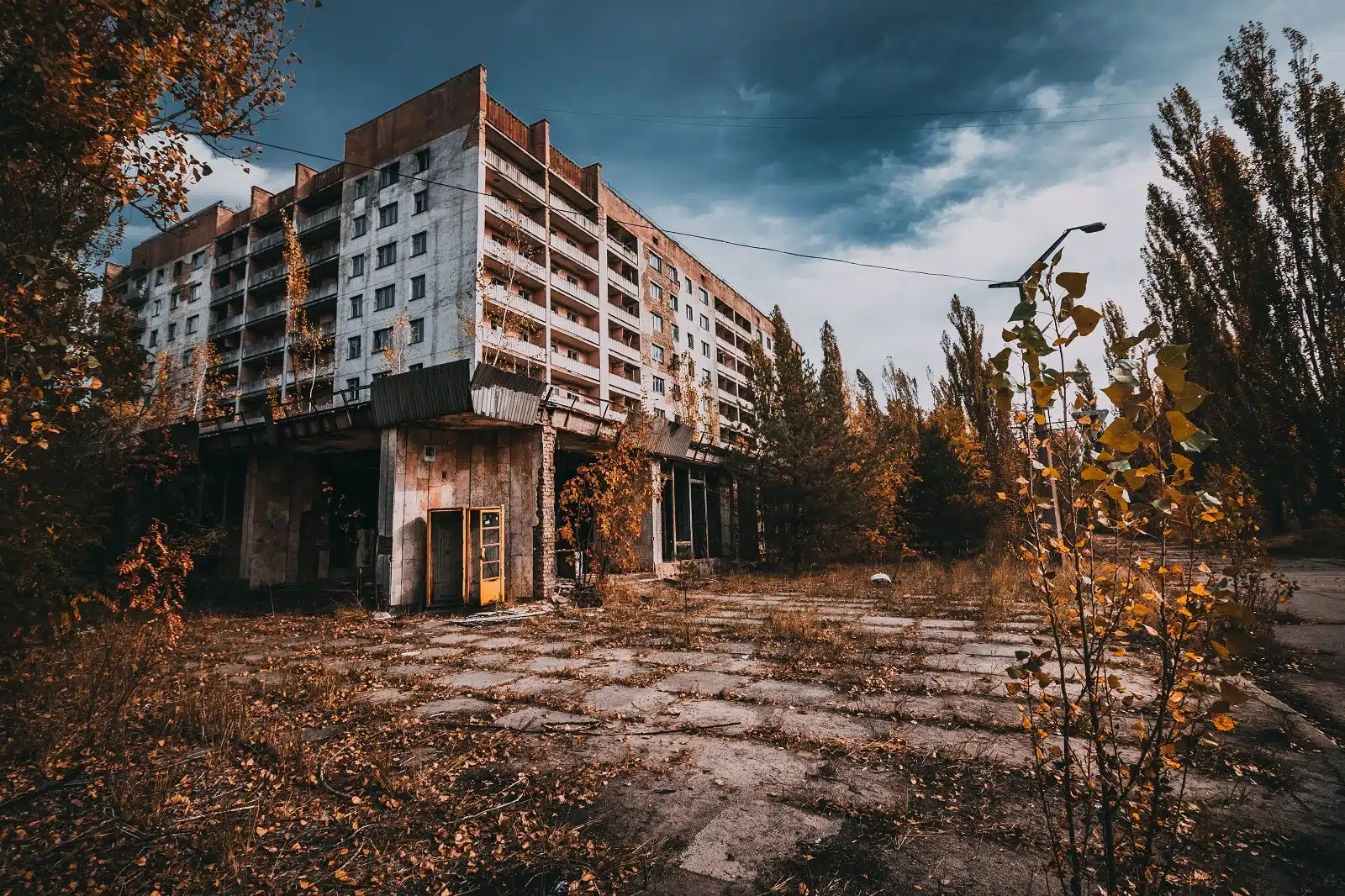
Image Credit: Shutterstock / Roberts Vicups
The Chernobyl Exclusion Zone, the site of the catastrophic nuclear disaster in 1986, offers a haunting exploration of a post-apocalyptic world. The abandoned city of Pripyat, once home to the Chernobyl Nuclear Power Plant workers and their families, now stands frozen in time. The empty streets, decaying buildings, and the iconic Ferris wheel in the amusement park create an eerie atmosphere, a stark reminder of the disaster’s sudden and devastating impact. Guided tours provide safe access to this ghost town and the reactor site, offering insights into the events leading up to the disaster, the response efforts, and the ongoing consequences. The visit is a journey through a deserted city and a reflection on the risks of nuclear power and the resilience of nature, which has slowly begun to reclaim the area.
Insider’s Tip
Visit the nearby town of Slavutych, built for the displaced workers of Chernobyl.
When to Travel
April to October is preferable, as the weather is more temperate, and the visibility is better for exploring.
How to Get There
Fly to Kyiv and join a guided tour with authorized access to the Exclusion Zone.
3. Ground Zero, New York City, USA

Image Credit: Shutterstock / anderm
Ground Zero, the site of the September 11 terrorist attacks, is a place of profound reflection and remembrance. The 9/11 Memorial, with its twin reflecting pools set within the footprints of the original Twin Towers, is a powerful tribute to the nearly 3,000 victims. The surrounding plaza, with its grove of trees, provides a peaceful space for contemplation amidst the bustle of Lower Manhattan. The 9/11 Memorial Museum takes you deeper into the events of that day, the aftermath, and the global impact of the tragedy through multimedia exhibits, personal narratives, and artifacts. The museum’s thoughtful design and poignant exhibits offer a space to understand the magnitude of the loss and the resilience of the human spirit in the face of adversity.
Insider’s Tip
Allocate enough time to fully experience the museum’s extensive exhibits.
When to Travel
Open year-round, but spring and fall offer pleasant weather for visiting and exploring the outdoor memorial.
How to Get There
Ground Zero is located in Lower Manhattan and is accessible by various subway lines.
4. The Killing Fields, Cambodia

Image Credit: Shutterstock / StreetVJ
The Killing Fields of Choeung Ek, just outside Phnom Penh, are a stark reminder of the brutality of the Khmer Rouge regime. This former orchard-turned mass grave site is one of many scattered across Cambodia, where over a million people were executed and buried. The memorial stupa, filled with skulls and bones of the victims, stands as a chilling reminder of the genocide. Walking through the fields, where clothes and bones still surface, is a sobering experience. The site serves as a memorial to those who lost their lives and as a powerful lesson on the dangers of totalitarian regimes and the importance of human rights and justice.
Insider’s Tip
Pair a visit to the Killing Fields with a tour of the Tuol Sleng Genocide Museum for a comprehensive understanding.
When to Travel
The dry season from November to February is the best time to visit, with cooler temperatures and less rainfall.
How to Get There
Fly to Phnom Penh and take a short drive or tuk-tuk ride to the site.
5. Hiroshima Peace Memorial, Japan
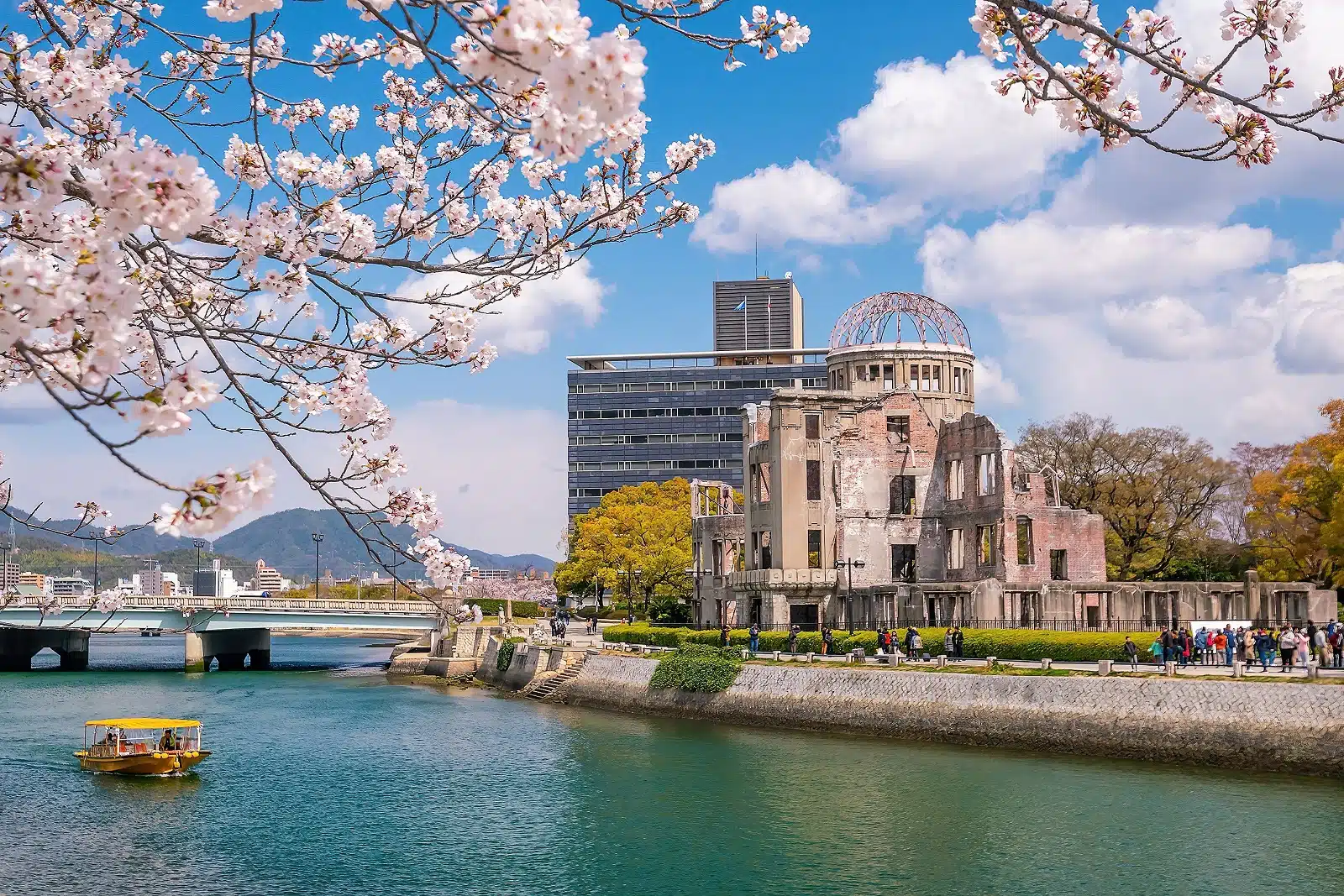
Image Credit: Shutterstock / f11photo
The Hiroshima Peace Memorial, also known as the Atomic Bomb Dome, is a haunting relic of the first use of nuclear weapons in war. The skeletal structure of the dome, standing amidst the modern city of Hiroshima, serves as a stark reminder of the destruction caused by the atomic bomb on August 6, 1945. The surrounding Peace Memorial Park, with its various monuments, statues, and the Flame of Peace, is dedicated to the memory of the victims, the promotion of world peace, and the elimination of nuclear weapons. The Hiroshima Peace Memorial Museum provides an in-depth look at the events of that day, the impact on the city’s inhabitants, and the ongoing efforts for peace and nuclear disarmament. The site is a memorial and a call to action for a future without nuclear weapons.
Insider’s Tip
Attend the Hiroshima Peace Memorial Ceremony on August 6 for a poignant experience.
When to Travel
Spring (March to May) and autumn (September to November) are ideal for comfortable weather.
How to Get There
Fly to Hiroshima or take a bullet train from major cities like Tokyo or Osaka.
6. Robben Island, South Africa

Image Credit: Shutterstock / Darrenp
Robben Island, a symbol of the struggle against apartheid, is most famous for being the prison where Nelson Mandela spent 18 years of his life. A visit to the island, now a UNESCO World Heritage site, includes a tour of the maximum-security prison, including Mandela’s cell. It is often led by former political prisoners who share personal accounts of their experiences. The island’s history as a place of banishment, isolation, and imprisonment contrasts with its role today as a symbol of hope and a reminder of the triumph of the human spirit over adversity. The tour provides insight into the harsh realities of apartheid and celebrates the resilience and courage of those who fought for freedom and equality in South Africa.
Insider’s Tip
Book your tour in advance, as trips to the island can fill up quickly.
When to Travel
Summer months (November to March) are best for warmer weather and clearer skies.
How to Get There
Take a ferry from the V&A Waterfront in Cape Town.
7. Pompeii, Italy
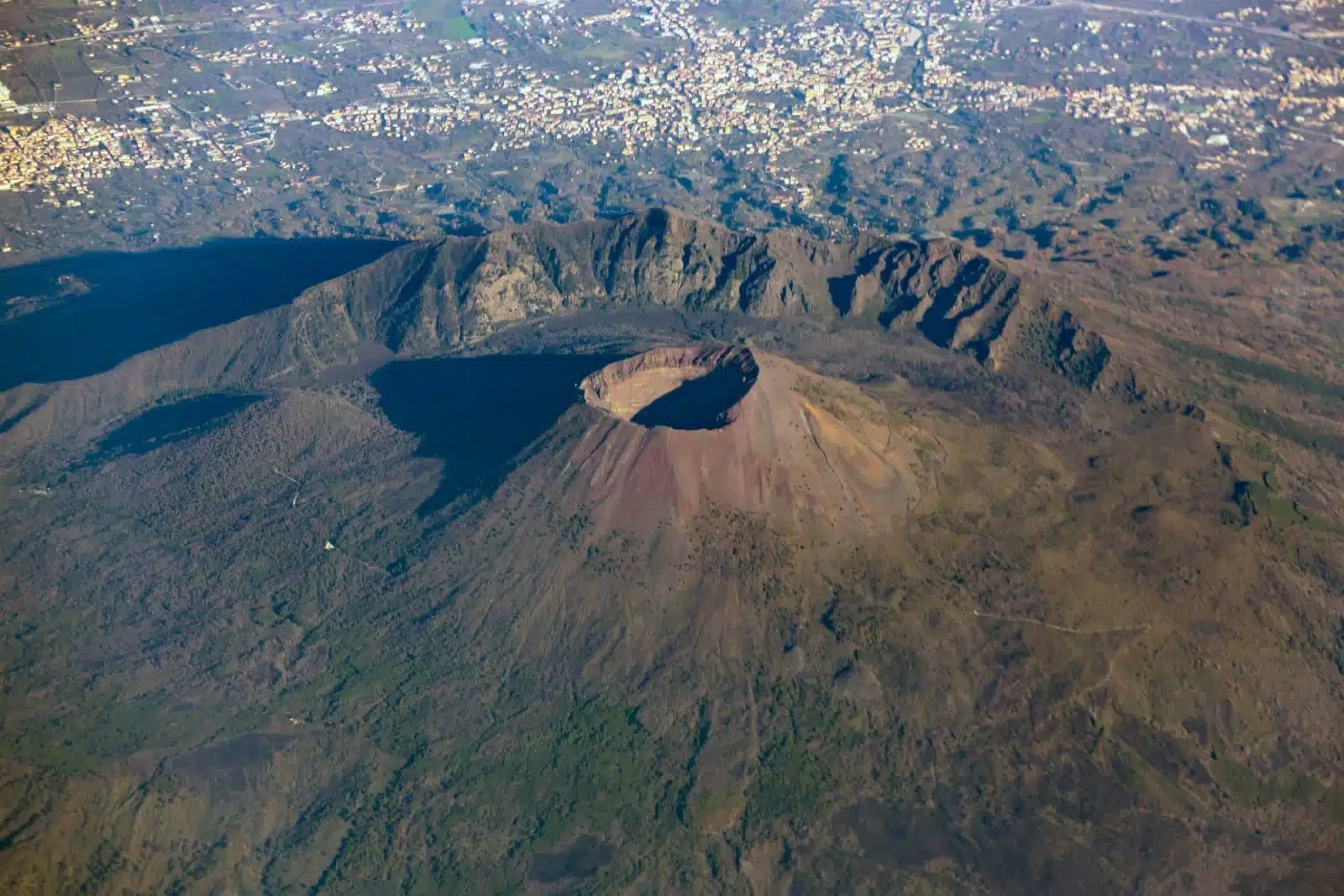
Image Credit: Shutterstock / Belish
Pompeii, the ancient Roman city buried under volcanic ash from Mount Vesuvius in 79 AD, offers a unique insight into the past. The site’s well-preserved ruins provide a vivid picture of daily life in a Roman city, with streets, homes, shops, and public buildings frozen in time. Highlights include the Forum, the Amphitheatre, and the House of the Vettii, with its intricate frescoes. The plaster casts of the victims, caught in their final moments, are a poignant reminder of the disaster’s human toll. A visit to Pompeii is a step back in time and a reflection on the power of nature and the fragility of civilization.
Insider’s Tip
Visit the Villa of the Mysteries just outside the main site to see well-preserved frescoes.
When to Travel
Spring (April to June) and autumn (September to October) offer pleasant temperatures and fewer tourists.
How to Get There
Fly to Naples and take a train or bus to Pompeii.
8. Alcatraz Island, USA
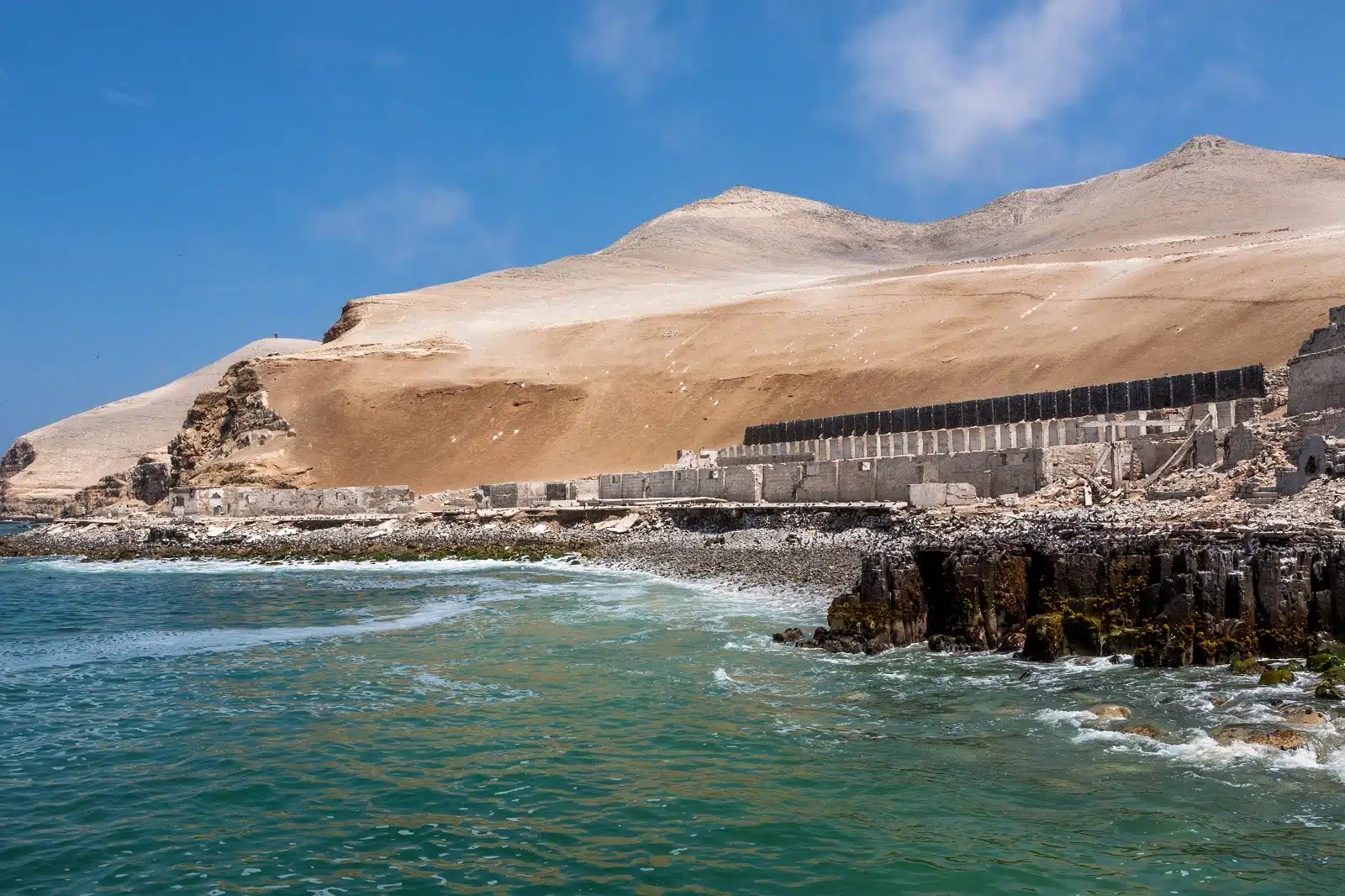
Image Credit: Shutterstock / Milton Rodriguez
Alcatraz Island, in the chilly waters of San Francisco Bay, is infamous for its federal prison, which once held notorious criminals like Al Capone and George “Machine Gun” Kelly. Today, the island is a popular tourist destination, where visitors can explore the prison complex, including the cell house, dining hall, and solitary confinement cells. The audio tour, featuring voices of former inmates and guards, brings the history of Alcatraz to life. The island also offers stunning views of the San Francisco skyline and the Golden Gate Bridge, adding to the experience. A visit to Alcatraz is a journey into a part of American history marked by crime, punishment, and tales of escape attempts.
Insider’s Tip
Book the night tour for a more eerie and less crowded experience.
When to Travel
Open year-round, but the best time is during spring and fall for milder weather and smaller crowds.
How to Get There
Take a ferry from Pier 33 in San Francisco.
9. The Catacombs of Paris, France
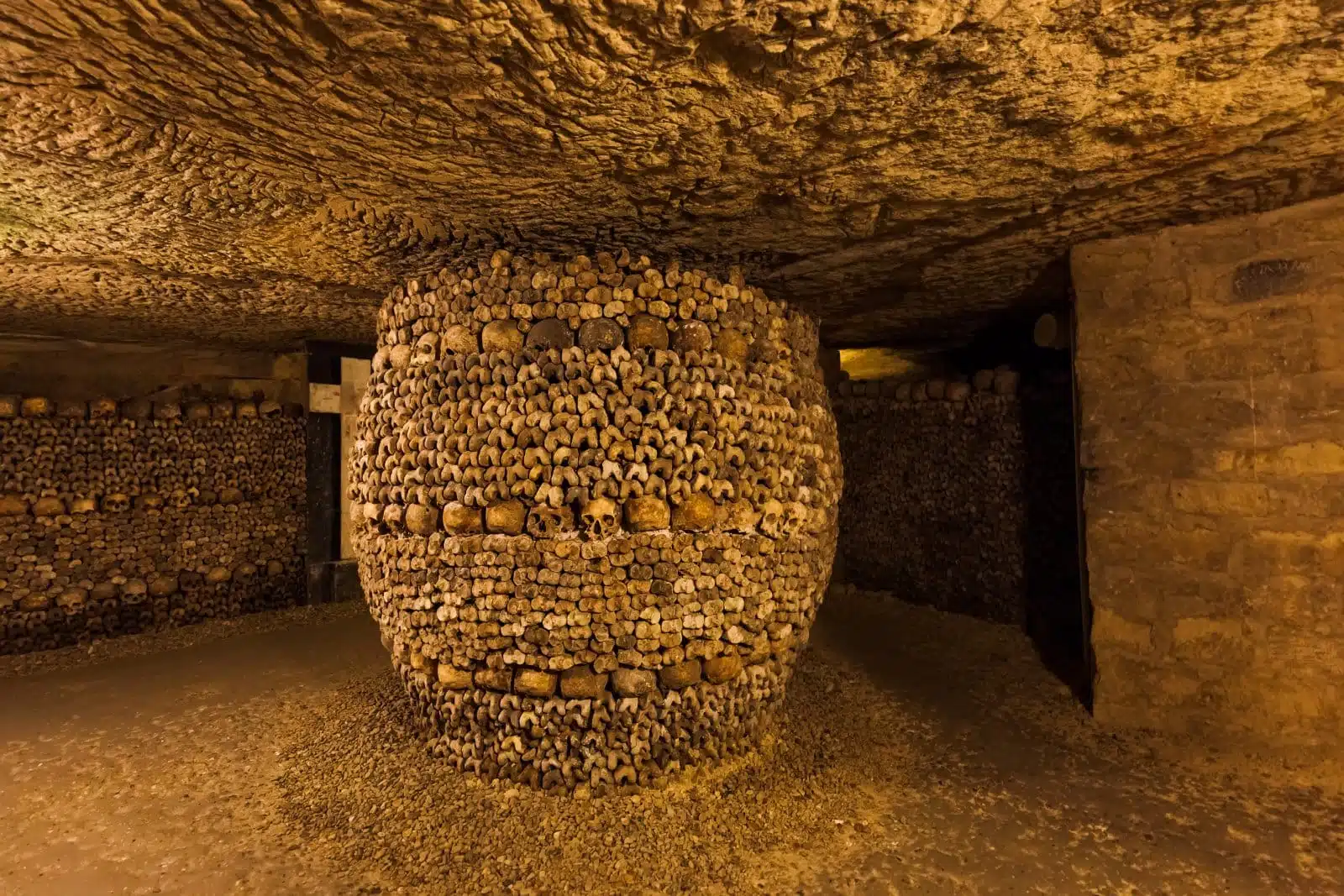
Image Credit: Shutterstock / Tatiana Popova
The Catacombs of Paris, a vast network of underground ossuaries beneath the city, hold the remains of millions of Parisians. This subterranean labyrinth, with walls lined with skulls and bones, offers a macabre yet fascinating journey through the history of Paris. The catacombs were created in the 18th century to alleviate overcrowding in the city’s cemeteries and have since become a unique and eerie attraction. The visit provides a different perspective on Paris, far removed from its romantic streets and monuments. It explores the city’s relationship with death and the afterlife.
Insider’s Tip
Wear comfortable shoes and be prepared for the cool, damp conditions underground.
When to Travel
Open year-round, but visiting in the shoulder seasons (spring and fall) can mean fewer tourists.
How to Get There
The catacombs are accessible via the Paris Metro, with the entrance near Denfert-Rochereau station.
10. The Tower of London, England
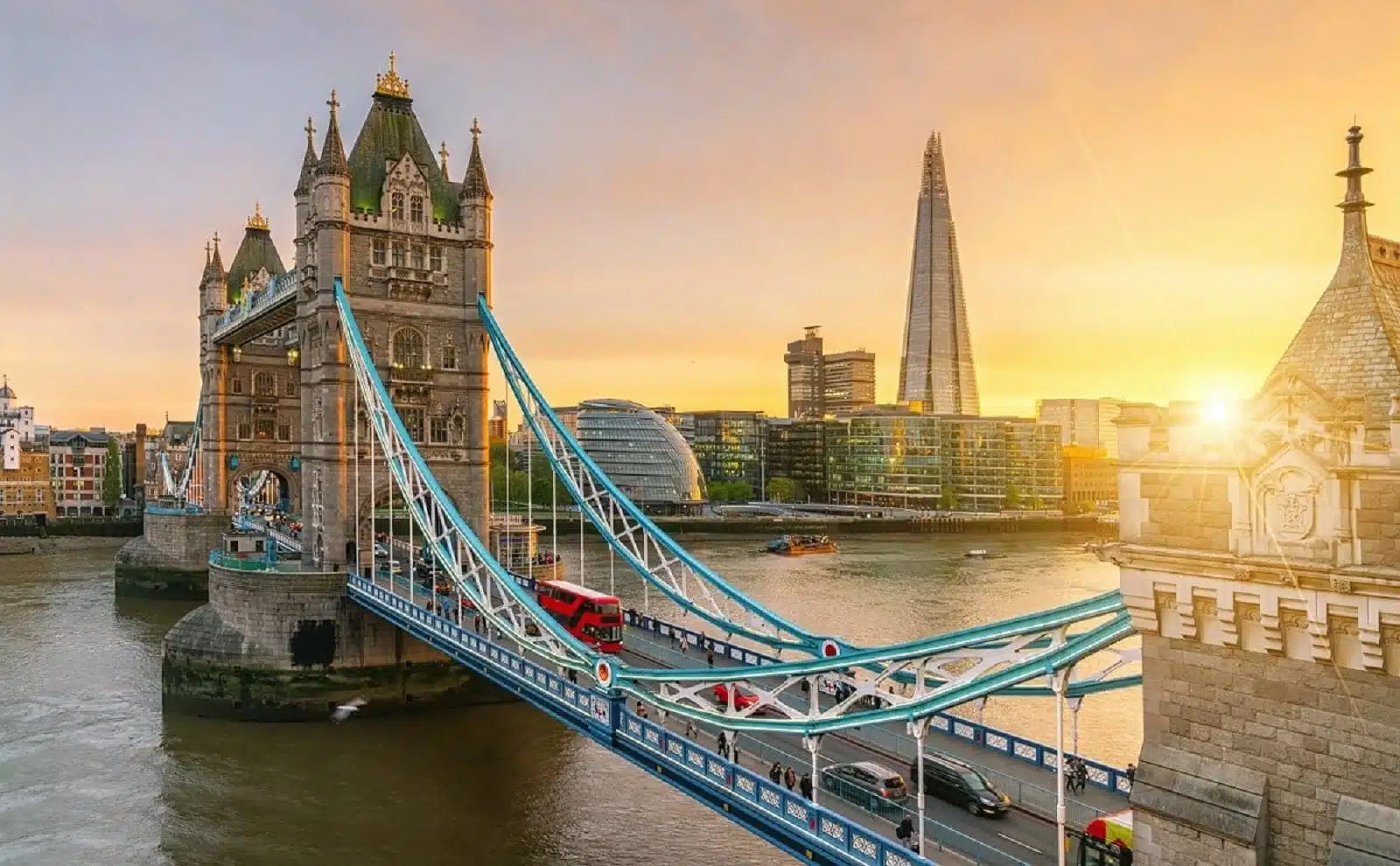
Image Credit: Shutterstock / r.classen
The Tower of London, a historic fortress on the banks of the River Thames, has a history filled with intrigue, imprisonment, and execution. Once a royal palace, a prison, and a place of execution, the Tower is now a popular tourist attraction. Visitors can explore the medieval buildings, see the Crown Jewels, and learn about the tower’s history as a place of torture and death. The Yeoman Warders (or Beefeaters) provide guided tours, sharing tales of the tower’s past residents, including Anne Boleyn and Guy Fawkes. The Tower of London offers a glimpse into England’s turbulent past, with stories of power, betrayal, and mystery.
Insider’s Tip
Attend the Ceremony of the Keys, the traditional locking up of the Tower, which takes place every evening.
When to Travel
Spring and summer offer longer daylight hours for exploring, but the site is open year-round.
How to Get There
The Tower is easily accessible by London’s public transport, including the Underground and buses.
11. Oradour-sur-Glane, France

Image Credit: Shutterstock / BackPackJack
Oradour-sur-Glane, a small village in France, stands as a memorial to one of the most horrific massacres of World War II. On June 10, 1944, the Nazi SS wiped out the village, killing 642 residents and leaving the village in ruins as a chilling reminder of the atrocity. Today, the preserved ruins of Oradour-sur-Glane, including the charred remains of homes and public buildings, serve as a powerful and somber memorial. The Centre de la Mémoire museum provides context and recounts the stories of the victims and survivors. A visit to Oradour-sur-Glane is a sobering experience, offering a poignant reminder of the atrocities of war and the importance of peace and reconciliation.
Insider’s Tip
Take time to reflect at the memorial, which lists the names of the victims.
When to Travel
The site is open year-round, but the best time to visit is from April to October for better weather conditions.
How to Get There
Oradour-sur-Glane is located near the city of Limoges, accessible by car or regional train services.
12. The Anne Frank House, Netherlands
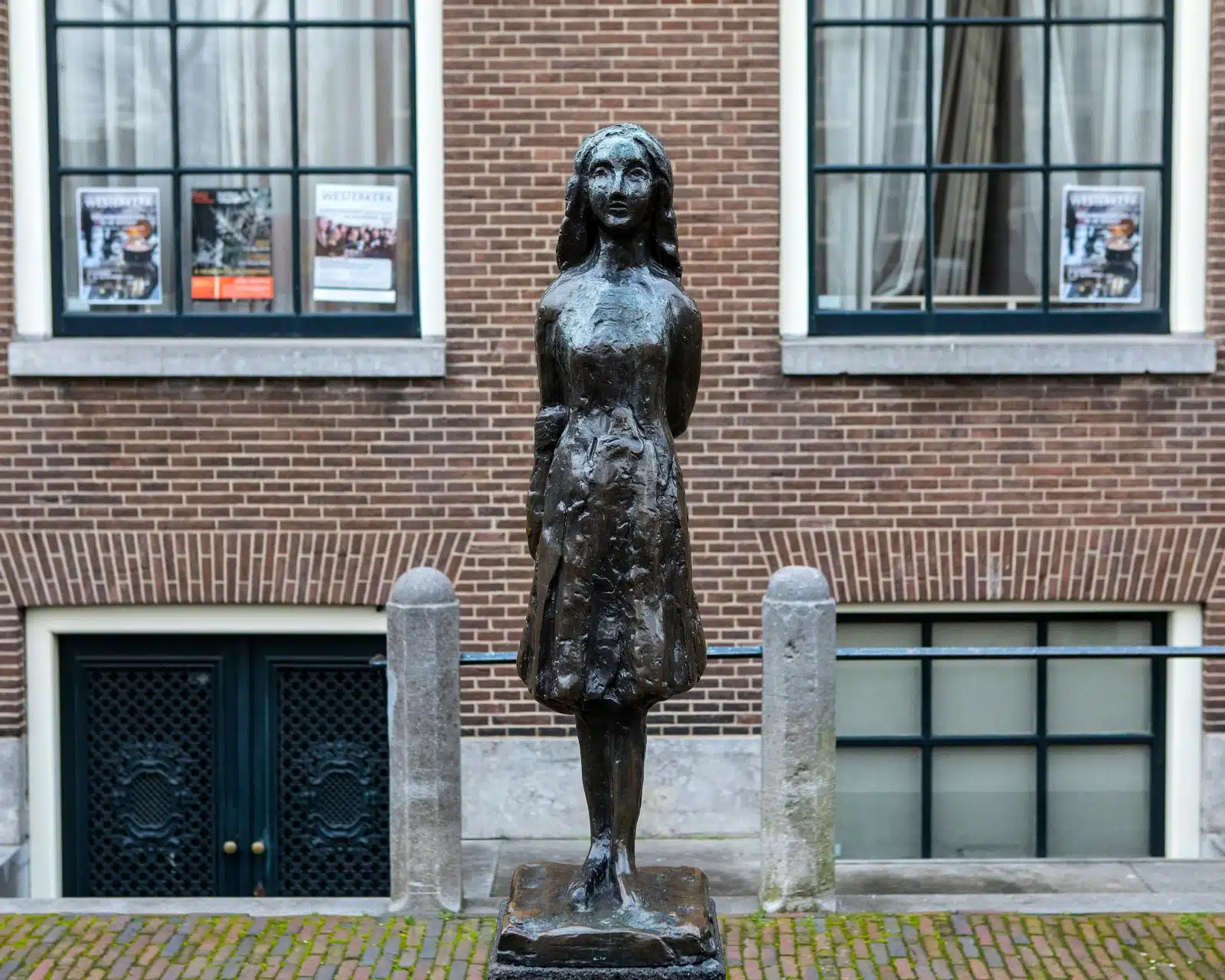
Image Credit: Shutterstock / chrisdorney
The Anne Frank House in Amsterdam is where Anne Frank and her family hid from the Nazis during World War II. Now a museum, it offers a moving and intimate look into the life of the Frank family during their time in hiding. Visitors can walk through the secret annex, see Anne’s original diary, and learn about the broader context of the Holocaust. The museum pays tribute to Anne Frank and serves as a powerful reminder of the dangers of persecution and intolerance. The visit showcases the strength and resilience of the human spirit in the face of unimaginable adversity.
Insider’s Tip
Book tickets online in advance to avoid long queues.
When to Travel
Open year-round, but visiting in the shoulder seasons (spring and fall) can help avoid the peak tourist crowds.
How to Get There
The museum is located in central Amsterdam and is easily accessible by foot, bike, or public transport.
The Bottom Line
Dark tourism offers a profound way to connect with history, understand the depths of human experiences, and reflect on the past. These destinations, while somber, provide valuable lessons and insights into the resilience and strength of the human spirit. As you explore these sites, remember to approach them with respect and empathy, honoring the memories and stories they hold.
More From The Green Voyage
The 6 Best Luxury Train Journeys Around the World
Boutique River Cruises in Southeast Asia Eco-Friendly Luxury Travel
Tips and Top Destinations for the Conscious Explorer
The post Dark Tourism 2024 – 12 of the World’s Somber and Historic Sites first appeared on The Green Voyage.
Featured Image Credit: Shutterstock / Kochneva Tetyana.
For transparency, this content was partly developed with AI assistance and carefully curated by an experienced editor to be informative and ensure accuracy.
Tips for Trip Success
Book Your Flight
Find an inexpensive flight by using Kayak, a favorite of ours because it regularly returns less expensive flight options from a variety of airlines.
Book Your Hotel or Special Accommodation
We are big fans of Booking.com. We like their review system and photos. If we want to see more reviews and additional booking options, we go to Expedia.
You Need Travel Insurance!
Good travel insurance means having total peace of mind. Travel insurance protects you when your medical insurance often will not and better than what you get from your credit card. It will provide comprehensive coverage should you need medical treatment or return to the United States, compensation for trip interruption, baggage loss, and other situations.Find the Perfect Insurance Plan for Your Trip
